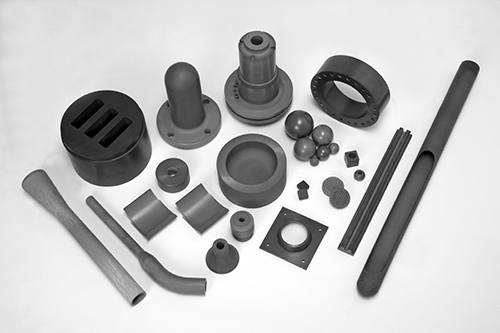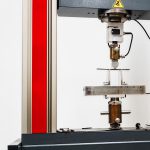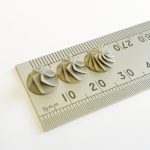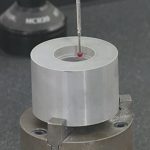Silicon nitride-based ceramics are manufactured to exhibit exceptional thermodynamic properties and compete with conventional refractory materials for resistance to corrosive media and highly fluctuating thermal values. These material properties are associated with enhanced mechanical characteristics, including high strength profiles and outstanding resistance to physical stress.

The physical integrity of a ceramic material in response to applied force is also a critical factor for determining its viability in demanding industrial spaces. This relationship between applied stress and proportional material deformation is referred to as Young’s modulus. This blog post will explore the Young’s modulus of silicon nitride ceramic materials in more detail:
What is Young’s Modulus?
The Young’s modulus (E), or the modulus of elasticity, of a material determines the level of applied force required before it bends or breaks. It describes the constant ratio of tensile stress (σ) to tensile strain (ε) within the elastic limits of materials for both tension and compressive forces. This characteristic determines the force required to cause engineered materials such as silicon nitride ceramics to stretch and deform.
The moduli of elasticity are determined via the formula E = σ/ε and are typically expressed as a value of mega- or gigapascals (MPa or GPa).
Importance of Young’s Modulus
Young’s modulus is used to plot stress-strain graphs to determine the malleability and brittleness of a material with regards to its stiffness and linear elasticity. This information is critical for components in severe industrial environments as it can determine the material’s tendency towards elastic or permanent deformation under distinct thermodynamic conditions. Rigid technical ceramics with high Young’s moduli are broadly used in high temperature and mechanically demanding applications for thermally-critical components such as molten metal handling crucibles and chemical thermocouple protection sheaths.
- For more information on the mechanical performance of materials, read our blog post on the Fracture Toughness of Ceramic Materials
Silicon Nitride and Young’s Modulus
Silicon nitride ceramics exhibit some of the highest Young’s moduli available for engineered ceramics, owing to the highly dense composition of interlocking silicon nitride grains. The highest material stiffness is registered at approximately 470 GPa, belonging to naturally-occurring sapphires.
Several grades of silicon nitride ceramics are available from International Syalons, with distinct moduli of elasticity. These include:
- Syalon 101: displaying a Young’s modulus of 288 GPa
- Syalon 110: displaying a Young’s modulus of 139 GPa
- Syalon 050: displaying a Young’s modulus of 306 GPa
- Syalon 501: displaying a Young’s modulus of 340 GPa
Silicon Nitride Ceramics from International Syalons
International Syalons is committed to the continuous development of technical silicon nitride ceramics for the most demanding applications on earth. We were among the very first companies to acknowledge the potential of silicon nitride-based materials for refractor applications, providing exceptionally-rigid and high-strength materials for demanding thermal and mechanical environments. Our sialon grades exhibit distinct thermo-mechanical profiles suitable for a range of profiling techniques.
- Read our blog post on the Benefits of Sialon Thermocouple Protection Sheaths to learn about Young’s modulus in action.
If you would like any more information about our material grades, please do not hesitate to contact us.



